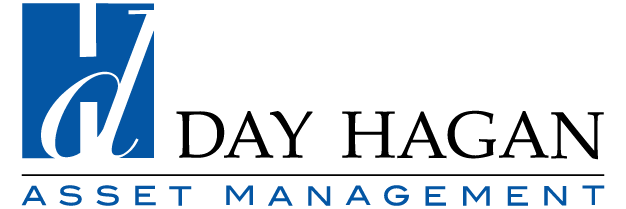Day Hagan Tech Talk: Internal Measuring Tool Repositioning
A downloadable PDF copy of the Article: Day Hagan Tech Talk: Internal Measuring Tool Repositioning (pdf)
Summary
With the Catastrophic Stop Loss Model still favorably positioned (when it reverses and recommends increasing cash, we will follow) and favorable seasonals into year-end, the S&P 500’s price trend remains intact. However, many internal measuring tools are vulnerable.
Stealth Correction Beneath the Surface
Mark Ungewitter stated the following, which I believe applies to the current readjustment within the domestic equity market (Figure 1): “Charts don’t give answers; they raise questions. Inferences are drawn when enough questions point in the same direction.” As highlighted last week, many internal measuring tools have negatively diverged from the recent price highs recorded by various domestic equity market indices. For example, Advance-Decline Lines (A/D Lines), the percentage of stocks above various moving averages, and the percentage of stocks outperforming the S&P 500 are not making new highs. Plus, New Lows are expanding, and New Highs continues to contract. If this isn’t remedied, it suggests that a topping process is underway.
Figure 1: S&P 500 (SPX), NYSE A/D Line and SPX A/D Line. | A/D Lines have negatively diverged since October, yet the SPX has remained steady.
Considering Figure 1 and last week’s chart depicting negative breadth divergences, it seems prudent to incorporate an investment strategy with built-in shock absorbers. Our Smart Sector strategies have a catastrophic stop loss component coupled with sector allocation models that rotate from risk-on to risk-off and, when appropriate, back to risk-on. Please let me know if you want to schedule a call to discuss the process and discipline underpinning our Smart Sector strategies.
Figure 2: S&P 500 with rising 21-day MA. | Support is in green and blue, and resistance is in red.
An upward-sloping price channel is a bullish continuation pattern that slopes up and is bound by an upper and lower trend line. The upper trend line marks resistance, and the lower trend line marks support—Figure 3.
Figure 3: Dow Jones Industrial Average. | A successful test of the lower channel line (green support line) or a higher trough (see mid-November) would set the stage for a bounce/rally.
The Spinning Wheel analogy from the November 21 Tech Talk (IWM chart) proved prescient and is still in play.
Figure 4: Small Cap proxy with rising 21-day MA. | Between $227.5(ish) and $225(ish) is critical support.
Looking into 2025
While I believe making predictions on where the stock market will be in 12 months is an exercise in ego (you may be generally correct about the final figure, but the path to that figure could be fraught with major declines and rallies), I want to end this report by highlighting Figure 5 again. Figure 5, as Don Hagan stated, “Illustrates S&P 500 performance around first-rate cuts, as well as performance during fast and slow rate cut cycles. The current cycle is shown in light (aqua) blue. The current cycle dovetails with a historically slow rate-cutting cycle.”
Figure 5: History shows that slower rate cut cycles are bullish over the first year. We are about three months into this cycle (the first cut was on 9-18-2024).
Note: Even considering Figure 5, I can’t disagree with NDR’s statement that “higher inflation and a hawkish shift by the Fed is one of the bigger downside risks to stocks in 2025.” Let me know if you want to see the 40-year charts for the 10-year and 30-year U.S. Treasury yield.
Considering this report's normal publishing day (Wednesday) and the upcoming holidays, this may be the final Tech Talk report for 2024. However, if conditions dictate, we will publish an update.
Please let me know if you would like to schedule a call to discuss the process and discipline underpinning our Smart Sector with Catastrophic Stop, Smart Sector International, and/or Smart Sector Fixed Income strategies. Disclosures and Fact Sheets can be found here: https://dhfunds.com/literature.
Day Hagan Asset Management appreciates being part of your business, either through our research efforts or investment strategies. Please let us know how we can further support you.
Art Huprich, CMT®
Chief Market Technician
Day Hagan Asset Management
—Written 12.16-17.2024. Chart source: Stockcharts.com unless otherwise noted.
Disclosure
The data and analysis contained herein are provided “as is” and without warranty of any kind, either express or implied. Day Hagan Asset Management (DHAM), any of its affiliates or employees, or any third-party data provider, shall not have any liability for any loss sustained by anyone who has relied on the information contained in any Day Hagan Asset Management literature or marketing materials. All opinions expressed herein are subject to change without notice, and you should always obtain current information and perform due diligence before investing. DHAM accounts that DHAM, or its affiliated companies manage, or their respective shareholders, directors, officers and/or employees, may have long or short positions in the securities discussed herein and may purchase or sell such securities without notice. The securities mentioned in this document may not be eligible for sale in some states or countries, nor be suitable for all types of investors; their value and income they produce may fluctuate and/or be adversely affected by exchange rates, interest rates or other factors.
Investment advisory services offered through Donald L. Hagan, LLC, a SEC registered investment advisory firm. Accounts held at Raymond James and Associates, Inc. (member NYSE, SIPC) and Charles Schwab & Co., Inc. (member FINRA, SIPC). Day Hagan Asset Management is a dba of Donald L. Hagan, LLC.
